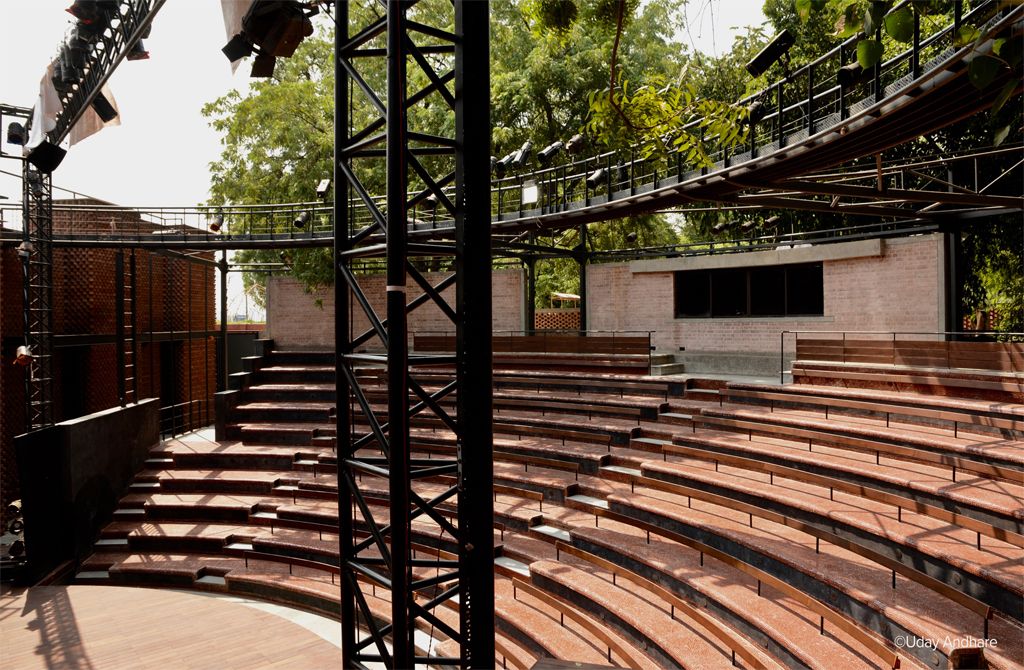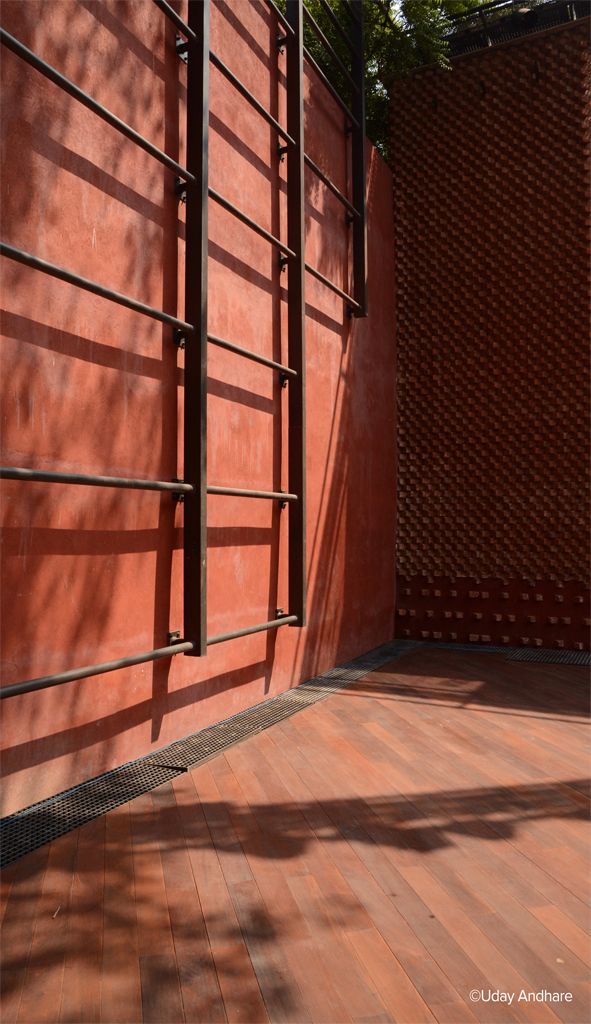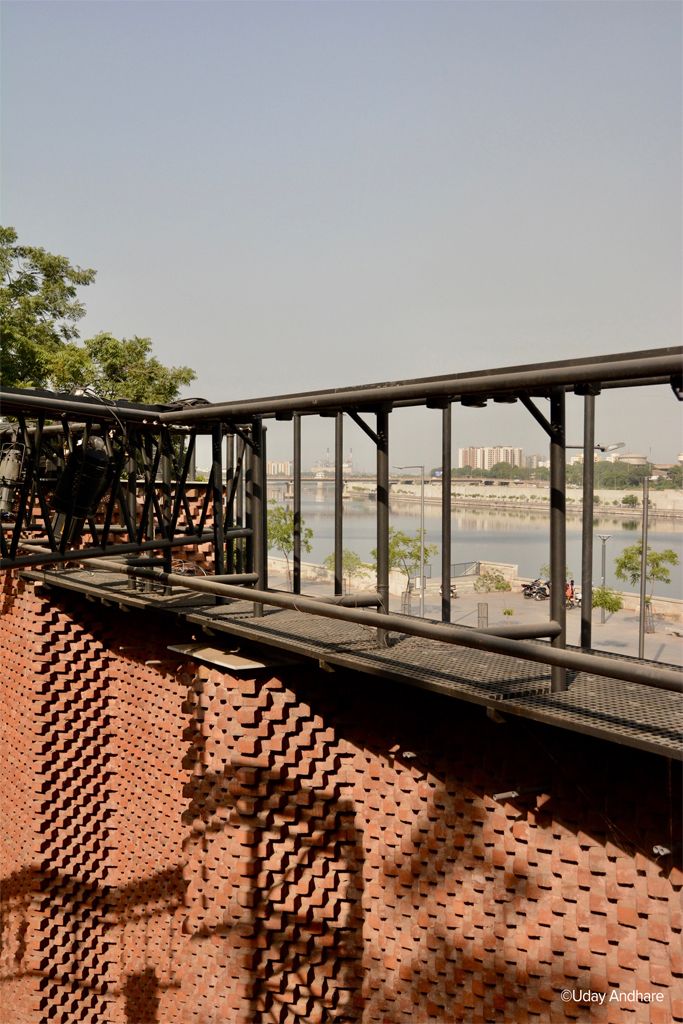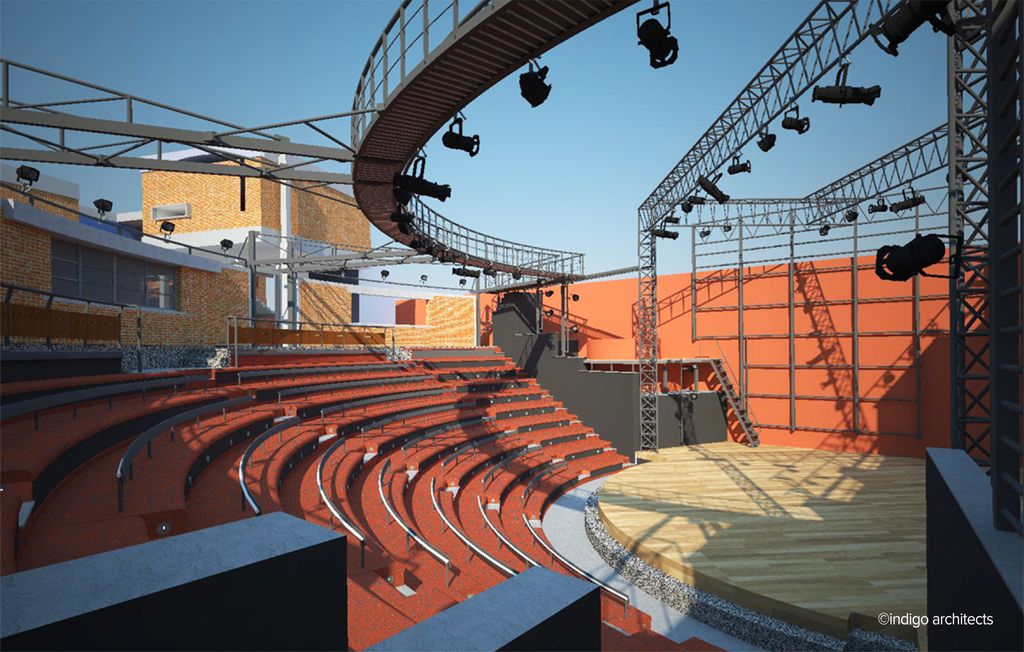A major chunk of the stage area was lost to the riverfront edge road and sidewalk, rendering the theatre inoperable for several years.
It is in the context of this reality that its renovation was both imperative and desired for its activities to flourish. The new proposed layout not only attempts to mitigate this situation, but also reimagines Natarani theatre to improve upon its existing infrastructure and capacity.










































